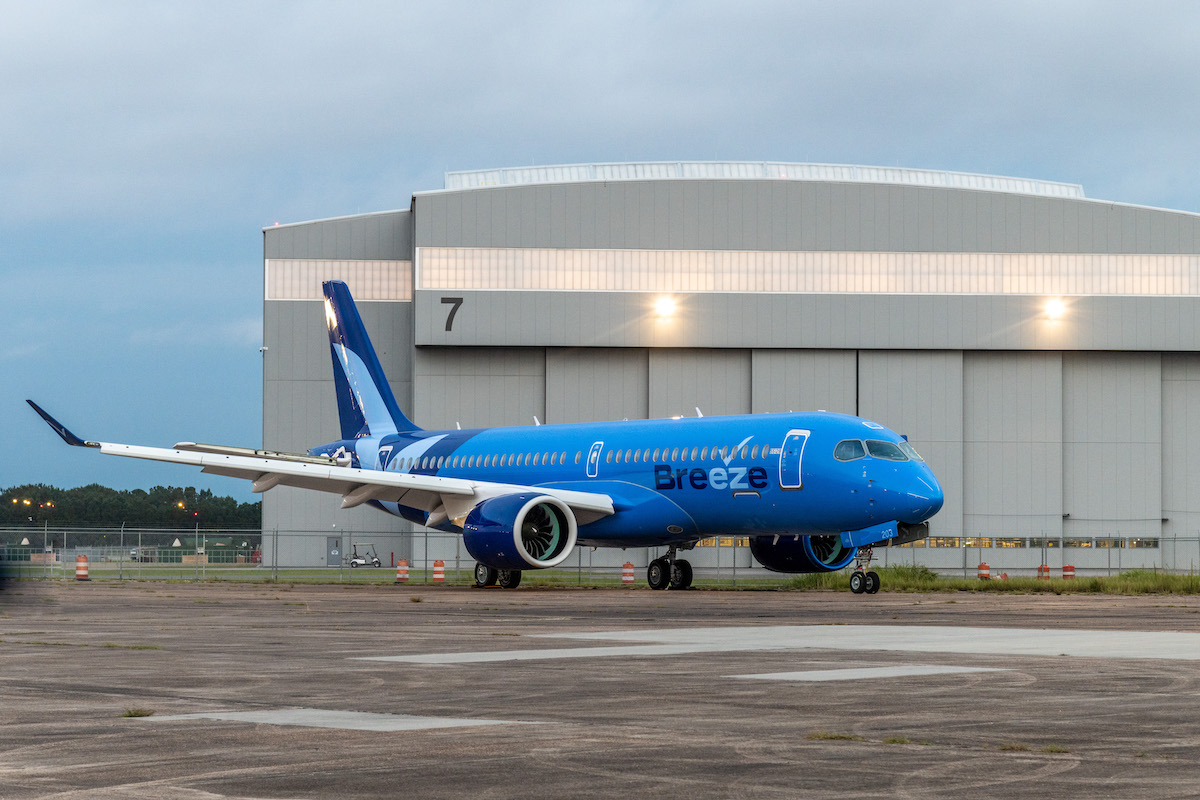U.S. airlines have scheduled too many flights this fall for the number of travelers, Breeze Airways founder and CEO David Neeleman said. This is pushing down airfares just as fuel prices are rising and putting pressure on airline profits.
“There’s a lot of people traveling [this fall] but you just have to fill that extra 20% of seats,” he told The Airline Observer founder Brian Sumers at the Skift Global Forum in New York on Wednesday. “Fares have come down as fuel prices have gone up, and that’s challenging.”
U.S. domestic airline seats are scheduled to increase nearly 8.4% from 2022 levels in the fourth quarter, according to Cirium Diio schedule data. That comes after a 8.6% increase in the third quarter. Compared to 2019, capacity will be up 2.5% in the September quarter and 4% in the December quarter.
The number of travelers was up on average 3% from 2019 levels this month, according to the latest Transportation Security Administration screening data.
At the same time, the price of jet fuel was up nearly 50% to $3.17 per gallon on September 26 from its bottom in May, according to data from airline industry trade group Airlines for America (A4A). Fuel and labor are the two largest expenses for airlines.
Neeleman is the latest executive of a U.S. budget airline to highlight weak travel demand this fall. Frontier Airlines and Spirit Airlines surprised the market earlier in September when they both forecast losses in the third quarter, which is historically a strong end-of-summer travel period. They cited increased “promotional activity” — in other words, fare sales — weak close-in bookings, and the rise in fuel prices for their outlooks.
Demand is “soft but we’re looking forward to a good winter,” Neeleman said.
When asked about Breeze’s own fare sales, he cited travel demand as well as the airline’s need to promote itself in new markets. Breeze launched in May 2021 to much fanfare and has expanded rapidly in the past two years; Cirium Diio schedules show it flying nine-times more capacity this year than it did two years ago.
Breeze is privately held and does not disclose profits or losses.
The trend seen by Breeze, Frontier, and Spirit this fall differs from that seen by the major U.S. carriers. American Airlines, Delta Air Lines, Southwest Airlines, and United Airlines, which combined carry about 80% of U.S. fliers, have said travel demand remains strong. They have, however, lowered profit forecasts owing to higher fuel expenses.
“The ultra-low-cost airlines [Frontier and Spirit] had more dire warnings than their larger legacy competitors,” TD Cowen airline analyst Helane Becker wrote in a recent report. “We believe this is likely due to their outsized exposure to price-sensitive consumers … These price-sensitive consumers have less free cash flow to spend on travel, and are likely saving to be able to travel at year-end.”
Neeleman added that the big U.S. airlines also have “have market power and they use it.”
International Plans
Breeze is not letting weak travel demand slow its growth. Neeleman is bullish on the airline’s planned international expansion, which could begin as soon as early next year.
The carrier anticipates U.S. Department of Transportation authority to operate international charter flights within “days,” Neeleman said. Scheduled authority could come by the end of the year.
“I want to do stuff that we can start packaging — the Dominican Republic, Cancun, a lot of stuff in the Caribbean,” he said of Breeze’s international plans. Destinations in Central and South America, as well as Ireland, are also possibilities, he added.
A potential U.S. government shutdown, which could begin on October 1 unless Congress passes a new funding bill, would “absolutely” delay Breeze’s international certification, Neeleman said.
The airline currently only operates U.S. domestic flights primarily from secondary cities. Its largest bases are Charleston, S.C., Hartford, Conn., and Norfolk, Va., in terms of departures in the third quarter, Cirium Diio schedules show.
Charleston, Hartford, and Norfolk can all handle international flights but have few if any today. Only Hartford has scheduled international nonstops to Dublin and Toronto, Cirium Diio data show.





